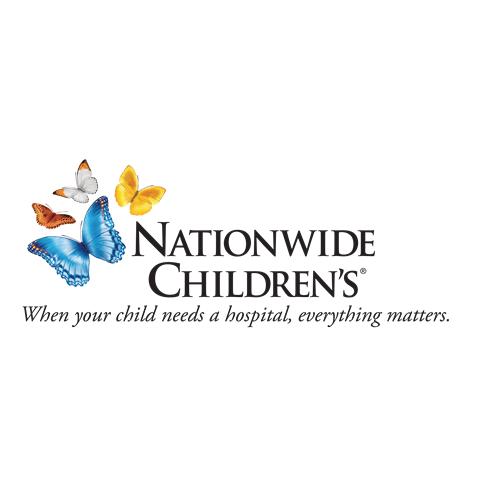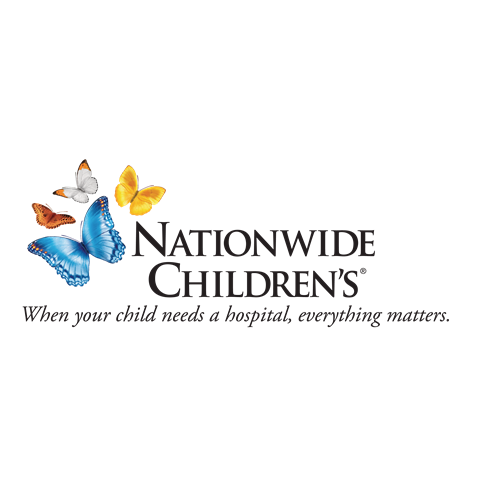Available Technologies
# of Displayed Technologies: 10 / 13
Applied Category Filter (Click To Remove): Diseases and Disorders
Categories
 Overcoming Immune Checkpoint Inhibition with VISTA Deficient NK Cells – ViDe* NK Cells
Overcoming Immune Checkpoint Inhibition with VISTA Deficient NK Cells – ViDe* NK Cells
TS-000972 — Natural Killer (NK) cells express a range of receptors to activate or inhibit certain cellular behavior to kill cancer cells. When an NK cell is deficient or dysfunctional, the efficiency of the NK cells is severely limited. VISTA is a protein sequence that activates T cells and acts as a moderator for the immune system. It has low-to-moderate expression but has been the target of study by a team of researchers at Nationwide Children’s Hospital led by Dr. Dean Lee. By removing VISTA in expanded NK cells, the inhibitory signal will be eliminated and thus resulting in an enhanced ability of NK cells to target cancers and overcome the immune-suppressive signals for improved cancer immunotherapy.
- College:
- Inventors: Lee, Dean; Pereira, Marcelo
- Licensing Officer: Corris, Andrew
 Priming Peptide Pools for Isolation of SARS-CoV-2-Specific T Cells
Priming Peptide Pools for Isolation of SARS-CoV-2-Specific T Cells
TS-000913 — Peptides can be used to stimulate antigen-specific T cells, allowing activated T cells to be isolated from immune individuals to be used in vaccination or treatment in others. The novel disease Coronavirus, also denoted as 2019-nCoV, was recognized by the World Health Organization as an unknown etiology in December of 2019. Severe Acute Respiratory Syndrome (SARS) is a disease that presents flu-like symptoms that is caused by coronavirus (SARS-CoV). A current process widely applicable to many pathogens uses the Miltenyi Prodigy device. In a study led by Dr. Dean Lee, his team found that this process can be adapted to SARS-CoV-2 using a specialty mix of peptides to isolate T cell immunity.
- College:
- Inventors: Lee, Dean
- Licensing Officer: Corris, Andrew
 A Novel Compound, GQ-16 Protects Against Kidney Disease with Additional Insulin Sensitizing Benefits and Reduced Side Effects
A Novel Compound, GQ-16 Protects Against Kidney Disease with Additional Insulin Sensitizing Benefits and Reduced Side Effects
TS-000912 — There are a few prominent diseases that affect the kidney, such as nephrotic syndrome and diabetic nephropathy. To treat Type II diabetes, there is a readily available pharmaceutical known as pioglitazone that is often used in conjuncture with other compounds to reduce proteinuria in patients with kidney diseases. A team of researchers at Nationwide Children’s Hospital have developed a novel compound to act as a treatment agent in cases of kidney disease. The new design has similar insulin sensitizing effects as pioglitazone as well as its ability to reduce proteinuria. This compound, titled GQ-16, has similar efficacy as traditional Type II diabetes drugs and acts as a new indication for nephrotic syndrome or kidney diseases, with a significant reduction in side effects such as weight gain or adipogenesis.
- College:
- Inventors: Agrawal, Shipra
- Licensing Officer: Corris, Andrew
 Glomerular Transcriptomic Analysis of Glucocorticoid- and Pioglitazone-Treated Nephrotic Syndrome
Glomerular Transcriptomic Analysis of Glucocorticoid- and Pioglitazone-Treated Nephrotic Syndrome
TS-000859 — Nephrotic syndrome (NS) is a common kidney disease found in children that creates an overabundance of protein in the urine, comparable to proteinuria in adults. As of now, there are no approved safe and effective treatment for NS, especially for those whose NS is steroid or multi-drug resistant. A team of researchers have identified a series of new molecular targets for future drug development. Using glomerular transcriptomes and informatic analysis, clinicians will be able to identify immunosuppressive approaches that are distinct from the current procedures.
- College:
- Inventors: Smoyer, William; Agrawal, Shipra; Bhayana, Sagar
- Licensing Officer: Corris, Andrew
 Biomarkers for Urinary Tract Infections
Biomarkers for Urinary Tract Infections
TS-000855 — To diagnose urinary tract infections (UTI), the current strategies use leukocyte esterase, a urine test to look for white blood cells and other signs of infection. which have limited accuracy. These inaccuracies put patients at risk for unneeded antibiotics or delayed treatments, that can allow for UTI progression. Studies have found that the protein levels in urine could differentiate positive and negative results of UTIs. This new testing strategy can improve diagnostics and subsequent patient care.
- College:
- Inventors: Watson, Joshua; Schwaderer, Andrew
- Licensing Officer: Corris, Andrew
 Epitope Tag Targeting Binding Domain
Epitope Tag Targeting Binding Domain
TS-000854 — Dr. Kevin Cassady and his team have identified an amino acid epitope encoded from Syndecan 4 (SDC4) that binds to a receptor protein on immunosuppressive myeloid and dendric cells called GPNMB. This group has developed a series of fusion proteins including FcGamma (Fcγ) fusions to encode the binding GPNMB-interacting domain, and shared antigens containing epitope tags. They have incorporated the fusion into virus expressed antigens to target myeloid cells in the tumor microenvironment in order to change their functional activity and enhance uptake and processing of antigens. Because SDC4 and GPNMB act as co-inhibitory molecules, they anticipate that fusion proteins will disrupt this interaction, which will enhance T cell activity and could be used as an anti-cancer immunotherapy.
- College:
- Inventors: Cassady, Kevin
- Licensing Officer: Corris, Andrew
 BELS: Behavior, Emotion, Learning and Social Evaluation
BELS: Behavior, Emotion, Learning and Social Evaluation
TS-000833 — Psychologist Natalie Truba and Harvard Medical School’s Molly Colvin have developed a new tool to screen and measure the emotional, behavioral, learning, and social needs of pediatric patients diagnosed with Duchenne or Becker muscular dystrophy. Both muscular dystrophies are progressive, inherited disorders that display as muscle weakness that impacts the child’s ability to stand and walk. The intention of the tool is to advise and guide providers who lack direct access to mental health providers during clinic visits. This screening provides recommendations for support, guidance, or for further investigation or intervention for triaging mental, behavioral, or learning concerns.
- College:
- Inventors: Truba, Natalie
- Licensing Officer: Corris, Andrew
 Pioglitazone Repurposed for Nephrotic Syndrome
Pioglitazone Repurposed for Nephrotic Syndrome
TS-000737 — Nephrotic syndrome (NS) is a common kidney disease found in children that creates an overabundance of protein in the urine, comparable to proteinuria in adults. As of now, there are no approved safe and effective treatment for NS, especially for those whom NS is steroid or multi-drug resistant. Current treatments for NS are only partially effective and often create notable toxicity, but existing thiazolidinediones (TZDs) used for proteinuria in adults have resulted in reduction of proteins found in the urine. Introducing the TZD pioglitazone (PIO) to a trial study conducted by Dr. William Smoyer, pediatric patients with multi-drug resistant NS showed notable proteinuria reduction in comparable time periods, both before and after the addition of PIO in their medical regimens.
- College:
- Inventors: Smoyer, William
- Licensing Officer: Corris, Andrew
.png) Novel Diagnostic Tools for Acute Peritonitis
Novel Diagnostic Tools for Acute Peritonitis
TS-000635 — Infectious peritonitis is a serious complication in patients undergoing chronic peritoneal dialysis (PD) leading to patient morbidity and mortality. Currently available, non-specific diagnostic criteria of peritonitis can lead to missed /over-diagnosis. Researchers at Nationwide Children’s Hospital have discovered more sensitive and specific biomarker for peritonitis in the PD population that entails measurement of antimicrobial peptide levels. This new process will aid practitioners in early, accurate diagnosis of acute peritonitis in patients undergoing PD.
- College:
- Inventors: Becknell, Brian; Ayoob, Rose; Dhingra Pottanat, Neha
- Licensing Officer: Corris, Andrew
 Oncolytic Immune Targeting ChIL13Ra2
Oncolytic Immune Targeting ChIL13Ra2
TS-000556 — Oncolytic viruses (OVs) target cancer cells, killing them from the inside. As the contaminated cancer cells die, the biproducts develop additional infectious components that continue to destroy the tumor. Dr. Kevin Cassady and his team have found that using OV-based “shared” antigen expression allows the immune system to recognize these antigens and improves the capacity of the immune system to fight tumor activity. Shared antigen expression includes proteins that are overexpressed by many tumors. They have been able to construct additional OVs that improve the immune targeting glioma and its associated antigen, IL13Ra2. This group is simultaneously investigating other ways enhance the anti-glioma activity by combining OVs with Chimeric Antigen Receptor-targeted T cells directed against IL13Ra2. In pre-clinical trials, this combination has produced improved anti-tumor activity with lower doses and safe to the patient.
- College:
- Inventors: Cassady, Kevin
- Licensing Officer: Corris, Andrew
